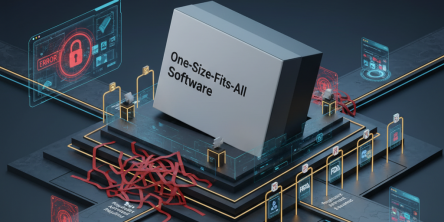Top 10 Cloud Monitoring Tools You Must Know

When providing services to your customers you would like to stay an eye fixed on everything that would impact your success thereupon – from low-level performance metrics to high-level business key performance indicators. From server-side logs to stack traces supplying you with full visibility into business and software processes that underpin your product. That’s where cloud monitoring tools and services inherit play.
They help you manage, monitor, and assess the performance of your cloud computing architecture, infrastructure, services, and applications, and confirm that your users and customers can use your platform to its full potential. Cloud monitoring may be a process of gaining observability into your cloud-based infrastructure, services, applications, and user experience. It allows you to watch the environment, review, and predict the performance and availability of the entire infrastructure or drill into each bit of it on its own.
Cloud monitoring works by collecting observability data from your whole IT infrastructure, analysing it, and presenting it in a format understood by humans, like charts, graphs, and alerts, as well as machines via APIs. There are many sorts of monitoring tools that will assist you to gain full observability of your infrastructure, services, applications, website performance, and health. Some assist you with only one aspect of monitoring, while others offer you full visibility into all of the key performance indicators, metrics, logs, traces, etc.
Some you'll find out easily and without lecture sales, others are more complex and involve a more traditional trial and sales process. Each solution has its pros and cons – sometimes the pliability of an answer comes with a better setup complication, while the setup and simple use accompany a limited set of features.
By using cloud applications with poor performance, companies lose revenue and customers. In fact, as complexity increases, cloud apps may have performance issues, leading to lower conversions and better bounce rates. Therefore, companies that launch cloud-based web apps got to constantly monitor their performance, functionality, and availability issues.
Few of the simplest cloud monitoring solutions available within the market
1. Sematext Cloud
It is a full-stack cloud monitoring solution that provides in-depth visibility and control over your IT infrastructure. It is easily customizable with the infrastructure metrics like common databases, servers, containers, as for pricing, there are different plans for each solution. And they are super flexible and cost-efficient. The main features of the Sematext cloud are API, dashboard, Data Import/Export, Data Security, Data Visualization, Endpoint Management and Network Monitoring.
2. Datadog
Datadog is a SaaS monitoring solution for monitoring cloud infrastructure, applications, and serverless capabilities. The main advantage of this platform is that it provides a complete observable solution with metrics, logs, security, real users and more. Offers annual and on-demand billing options. The main functions are CPU monitoring, capacity analysis, comment/annotation, data migration, data visualization, debugging, demand monitoring, and dependency tracking.
3. Netdata cloud
It is a next-generation observability platform that provides real-time insights and instantly diagnoses the anomalies in your infrastructure. It is free and open-source software that will work with all kinds of physical and virtual machines. One downside is that it's not available in mobile applications. It comes with the following features Event monitoring, performance metrics, Auto-detects, a custom database engine.
4. NewRelic
It is a cloud monitoring solution with rich dashboarding support, real user monitoring which provides top to bottom visibility. It has an analytics tool that detects issues possible solutions. But the matter is that they don’t use one pricing plan for all features. Thus if you don’t have a versatile budget then New Relic can isn't your choice. It has the following features are Resource Management, Uptime Reporting, Performance Analysis, Performance Management, Performance Metrics.
5. SumoLogic
This is a software cloud monitoring solution as a service with a focus on work logs. The field extraction allows for rule-based extraction of unstructured data. User-friendly for both experienced and new users. Some of its features are drag-and-drop, log analysis, log collection, log management, threat intelligence, and threshold alerts.
6. Site 24x7
Site 24x7 will be SaaS-based integrated cloud monitoring for DevOps and IT operations for both small and large organizations. It's an all-in-one solution that works on desktop, Windows, Linux, and mobile devices. The main features of the 24/7 website are API, access control/permissions, activity dashboard, uptime test, bandwidth monitoring,
7. Auvik
It is the best cloud monitoring service for network mapping and provides a complete picture of your network. In addition, configuration, backup, and recovery are automated. We offer two pricing plans, Essential and Performance. Key features include bandwidth monitoring, bandwidth troubleshooting, change management, data import/export, data mapping,
8. Amazon Cloud Watch
It's primarily aimed at buyers using Amazon Cloud Services (AWS), but it provides deeper insight into the overall health and performance of the cloud and monitors cloud resource and cloud infrastructure usage. Used to do. Key features are requirements-based testing, resource management, troubleshooting reports, Unicode compliance, and uptime reporting.
9. Google Operations
Formerly known as Stackdriver, it was also designed to monitor resource utilization and application performance for your Google Cloud Platform infrastructure. However, it also supports other cloud providers. The price is similar to the Amazon cloud. Some of its features are data connectors, data dictionary management, load balancing, log access, metadata management, and monitoring.
10. Pager Duty
This cloud monitoring tool offers a wide range of customization options and integration with other services such as HipChat and Slack. And it comes with a free trial. There is also a mobile app. Key features are warehouse management, problem management, mail server monitoring, maintenance planning, role-based approval, and root cause analysis.
Similar Articles
Not long ago, the idea of multiple AI agents working together, each with a specific role, collaborating to solve problems, felt like science fiction.
In today’s data-driven world, choosing the right business intelligence (BI) platform can make or break your organization's analytics success.
We all know that companies today are no longer limited to a single physical location. Work processes are also no longer strictly isolated.
It is neither secret nor news that the mind-boggling pace of digital transformation around us has totally altered consumer expectations.
In the world of finance, speed and accuracy are everything. Decisions made a day late can cost millions, and delayed visibility into financial performance can leave even the best organizations blind to risks.
Discover the best tools to enhance employee recognition, boost morale, and create a more motivated, engaged workplace culture.
At first glance, off-the-shelf software appears to be a dream come true. They are quick to set up, cheaper upfront, and marketed as “universal.”
A modern business must continually adapt. This bit everyone seems to know.
The modern healthcare industry is undergoing a significant transformation. The models of healthcare that we are used to thus far are now making way for a more data driven approach









